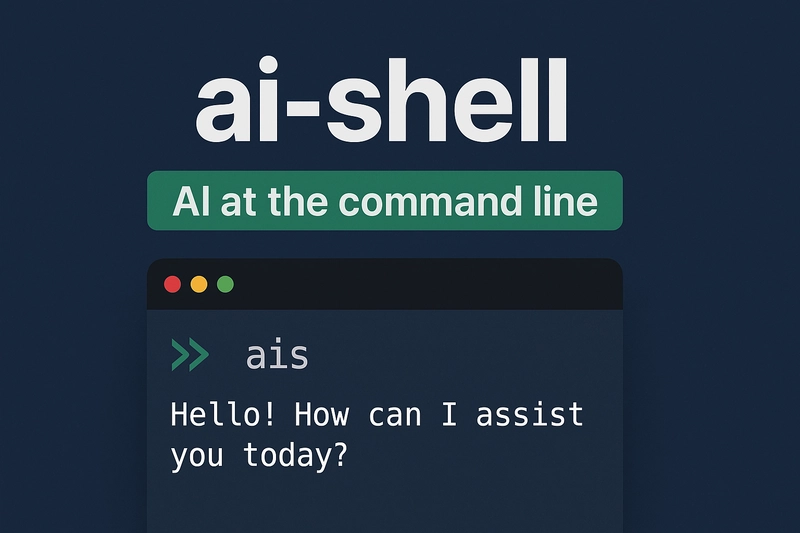Top Use Cases of AWS in Modern Application Development
Building modern applications isn’t just about writing code- it’s about creating fast, scalable, and secure digital experiences. People expect apps to load quickly, work smoothly, and keep their data safe. For developers, this means building apps that can handle more users, new features, and security needs, all without slowing down. That’s why many developers use AWS. AWS offers useful tools to build, test, and run modern apps with less effort. It helps with everything from small projects to large systems, making it easier to deliver better apps, faster. In this article, we’ll explore the top Use Cases of AWS in Modern Application Development and how it helps teams build smarter apps with less stress. Why AWS for Modern Application Development? AWS is considered one of the most reliable cloud platforms available today. It powers everything from small mobile apps to big enterprise systems. Here’s why developers love using AWS: Scalable: Apps can accommodate more users and traffic without crashing. Flexible: Works with different types of apps and programming languages. Pay-as-you-go: You pay only for what you use. No need to buy or manage hardware. Global reach: Deliver your app to users around the world, fast. Secure: Built-in tools to safeguard your data and applications. Constantly updated: New features and services are added regularly. Top 10 Use Cases of AWS in Modern Application Development Let’s discover the top 10 use cases of AWS in modern application development: 1. Serverless Application Development AWS Lambda enables you to execute code without managing servers. You write the code, and AWS takes care of the rest. Example: A photo app that resizes images automatically when users upload them. Lambda handles this task behind the scenes. Why it’s useful: You save time and money. Lambda only runs when needed and automatically scales. 2. Microservices Architecture Instead of one big app, microservices split apps into smaller parts that can be managed separately. ECS and EKS help run and scale these parts. Example: An online food delivery app with separate services for orders, payments, and delivery tracking. Why it’s useful: Easier to update, fix, or scale each part without affecting the whole app. 3. Scalable Databases AWS offers both NoSQL and relational databases. DynamoDB is great for fast, simple storage, while Aurora is used for complex data and transactions. Example: A travel booking app using Aurora for payment records and DynamoDB for storing session data. Why it’s useful: These databases grow with your app, keeping it fast and reliable. 4. Real-Time Apps Modern apps need to update in real time. AWS AppSync helps you build apps where users see changes instantly. API Gateway connects front-end to back-end easily. Example: A chat app where users see new messages without refreshing. Why it’s useful: Makes apps faster and smoother, improving user experience. 5. CI/CD Pipelines With AWS CodePipeline and CodeBuild, developers can automate the process of testing and deploying code. It speeds up development and reduces errors. Example: A development team releasing app updates weekly without manual deployment. Why it’s useful: Makes software delivery faster, more reliable, and easier to manage. 6. AI and Machine Learning Amazon SageMaker helps you add smart features to your app using machine learning. Example: A fitness app that uses AI to suggest personalized workout plans. Why it’s useful: Adds advanced features like prediction, recommendation, and automation without needing deep AI knowledge. 7. Mobile App Backend AWS Amplify is perfect for building mobile and web app backends. It supports user login, file storage, and APIs. Example: A language learning app using Amplify to handle user sign-ups and progress tracking. Why it’s useful: Makes it easy for front-end developers to set up and manage the backend. 8. Big Data and Analytics AWS offers powerful tools for analyzing large data sets. Redshift is used for deep data analysis, Athena lets you run queries without setting up a database, and Kinesis handles real-time data streams. Example: A news app analyzing user behavior to recommend articles. Why it’s useful: Helps businesses learn from data and make better decisions. 9. Security & Compliance Security is key in app development. AWS offers built-in services to manage users, protect data, and block attacks. Example: A banking app using IAM to allow only certain employees to access sensitive data. Why it’s useful: Keeps your application and customer data safe. 10. Edge Computing Edge computing helps process data closer to users, reducing delays. AWS CloudFront speeds up content delivery, and Greengrass runs apps locally on devices. Example: A video streaming app using CloudFront to deliver high-quality content fast. Why it’s useful: Improves perf

Building modern applications isn’t just about writing code- it’s about creating fast, scalable, and secure digital experiences.
People expect apps to load quickly, work smoothly, and keep their data safe. For developers, this means building apps that can handle more users, new features, and security needs, all without slowing down.
That’s why many developers use AWS.
AWS offers useful tools to build, test, and run modern apps with less effort. It helps with everything from small projects to large systems, making it easier to deliver better apps, faster.
In this article, we’ll explore the top Use Cases of AWS in Modern Application Development and how it helps teams build smarter apps with less stress.
Why AWS for Modern Application Development?
AWS is considered one of the most reliable cloud platforms available today. It powers everything from small mobile apps to big enterprise systems. Here’s why developers love using AWS:
- Scalable: Apps can accommodate more users and traffic without crashing.
- Flexible: Works with different types of apps and programming languages.
- Pay-as-you-go: You pay only for what you use. No need to buy or manage hardware.
- Global reach: Deliver your app to users around the world, fast.
- Secure: Built-in tools to safeguard your data and applications.
- Constantly updated: New features and services are added regularly.
Top 10 Use Cases of AWS in Modern Application Development
Let’s discover the top 10 use cases of AWS in modern application development:
1. Serverless Application Development
AWS Lambda enables you to execute code without managing servers. You write the code, and AWS takes care of the rest.
Example: A photo app that resizes images automatically when users upload them. Lambda handles this task behind the scenes.
Why it’s useful: You save time and money. Lambda only runs when needed and automatically scales.
2. Microservices Architecture
Instead of one big app, microservices split apps into smaller parts that can be managed separately. ECS and EKS help run and scale these parts.
Example: An online food delivery app with separate services for orders, payments, and delivery tracking.
Why it’s useful: Easier to update, fix, or scale each part without affecting the whole app.
3. Scalable Databases
AWS offers both NoSQL and relational databases. DynamoDB is great for fast, simple storage, while Aurora is used for complex data and transactions.
Example: A travel booking app using Aurora for payment records and DynamoDB for storing session data.
Why it’s useful: These databases grow with your app, keeping it fast and reliable.
4. Real-Time Apps
Modern apps need to update in real time. AWS AppSync helps you build apps where users see changes instantly. API Gateway connects front-end to back-end easily.
Example: A chat app where users see new messages without refreshing.
Why it’s useful: Makes apps faster and smoother, improving user experience.
5. CI/CD Pipelines
With AWS CodePipeline and CodeBuild, developers can automate the process of testing and deploying code. It speeds up development and reduces errors.
Example: A development team releasing app updates weekly without manual deployment.
Why it’s useful: Makes software delivery faster, more reliable, and easier to manage.
6. AI and Machine Learning
Amazon SageMaker helps you add smart features to your app using machine learning.
Example: A fitness app that uses AI to suggest personalized workout plans.
Why it’s useful: Adds advanced features like prediction, recommendation, and automation without needing deep AI knowledge.
7. Mobile App Backend
AWS Amplify is perfect for building mobile and web app backends. It supports user login, file storage, and APIs.
Example: A language learning app using Amplify to handle user sign-ups and progress tracking.
Why it’s useful: Makes it easy for front-end developers to set up and manage the backend.
8. Big Data and Analytics
AWS offers powerful tools for analyzing large data sets. Redshift is used for deep data analysis, Athena lets you run queries without setting up a database, and Kinesis handles real-time data streams.
Example: A news app analyzing user behavior to recommend articles.
Why it’s useful: Helps businesses learn from data and make better decisions.
9. Security & Compliance
Security is key in app development. AWS offers built-in services to manage users, protect data, and block attacks.
Example: A banking app using IAM to allow only certain employees to access sensitive data.
Why it’s useful: Keeps your application and customer data safe.
10. Edge Computing
Edge computing helps process data closer to users, reducing delays. AWS CloudFront speeds up content delivery, and Greengrass runs apps locally on devices.
Example: A video streaming app using CloudFront to deliver high-quality content fast.
Why it’s useful: Improves performance and lowers latency.
Getting Started with AWS for App Development
Starting with AWS is easy, even for beginners. Here’s a simple path:
- Create an AWS account: Sign up at aws.amazon.com.
- Pick your tools: Based on your app type, choose the right services (e.g., Lambda for serverless, Amplify for mobile).
- Use free tier: AWS offers many services for free up to certain limits, perfect for learning and small projects.
- Follow tutorials: AWS has great guides and sample projects to help you learn step-by-step.
- Build and test: Start small and test often. AWS gives you the flexibility to scale when ready.
Conclusion
AWS offers everything a modern developer needs to build strong, scalable, and smart apps. From serverless to AI, from real-time updates to security, it covers all areas of application development.
Whether you're building a startup product or modernizing a legacy app, AWS can help you do it better and faster.
Ready to build something amazing with AWS?
Hiring an experienced AWS developers can help you get started quickly and avoid common mistakes. With the right support, you can unlock the full power of AWS for your next app!





























































































































































![[The AI Show Episode 143]: ChatGPT Revenue Surge, New AGI Timelines, Amazon’s AI Agent, Claude for Education, Model Context Protocol & LLMs Pass the Turing Test](https://www.marketingaiinstitute.com/hubfs/ep%20143%20cover.png)





























































































































![[FREE EBOOKS] AI and Business Rule Engines for Excel Power Users, Machine Learning Hero & Four More Best Selling Titles](https://www.javacodegeeks.com/wp-content/uploads/2012/12/jcg-logo.jpg)









































































































































































































































![Hostinger Horizons lets you effortlessly turn ideas into web apps without coding [10% off]](https://i0.wp.com/9to5mac.com/wp-content/uploads/sites/6/2025/04/IMG_1551.png?resize=1200%2C628&quality=82&strip=all&ssl=1)


![This new Google TV streaming dongle looks just like a Chromecast [Gallery]](https://i0.wp.com/9to5google.com/wp-content/uploads/sites/4/2025/04/thomson-cast-150-google-tv-1.jpg?resize=1200%2C628&quality=82&strip=all&ssl=1)














![Apple Drops New Immersive Adventure Episode for Vision Pro: 'Hill Climb' [Video]](https://www.iclarified.com/images/news/97133/97133/97133-640.jpg)

![Most iPhones Sold in the U.S. Will Be Made in India by 2026 [Report]](https://www.iclarified.com/images/news/97130/97130/97130-640.jpg)



































































































































